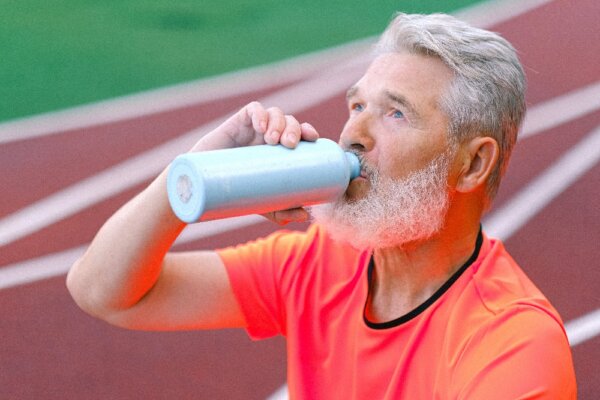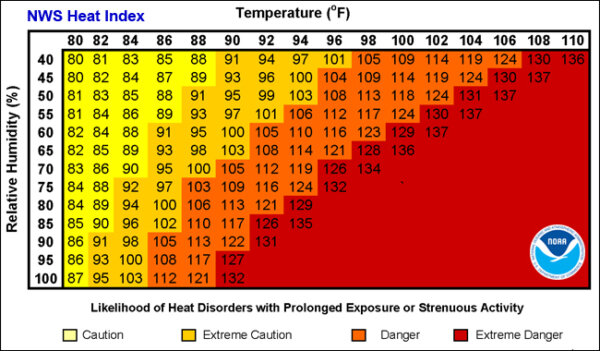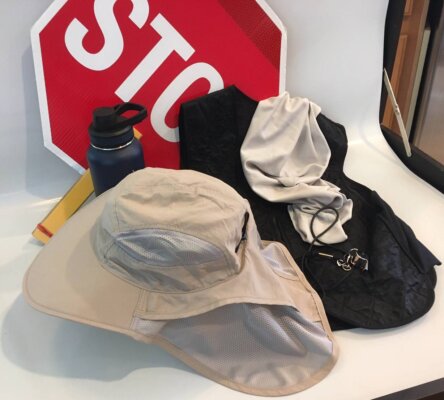
Heat Illness Prevention for People Who Work Alone
Every week I figure out a topic for my blog post. I call them “Advisories” because they usually provide some recommendation or warning about potential emergencies. Often, picking the topic comes out of that week’s news. But this week so many disasters were unfolding at the same time that I was overwhelmed!
So, I took another look at what’s going on in my OWN life. And the top issue – heat. Again! Last year I wrote about my own bout with heat exhaustion. Just a month ago I wrote about the dangers of extreme heat for senior citizens.
Then just two weeks ago I attended the “back-to-school training” for school crossing guards in my own town here in Southern California. (I’ve been a crossing guard for 5 years now. Best job ever. There’s definitely a book in there but I haven’t started it yet!)
Anyway, our first meeting always includes some sort of training. For example, how to fill out the request for a day off. Traffic laws. Understanding bullying and harassment. This year, the training was – by now you have guessed it: Heat Illness Prevention.
I thought I knew a lot about it. But this training added some important info. And I want to share.
This Advisory applies particularly to people like crossing guards who work alone.
What exactly is Heat Illness?
There seem to be five commonly accepted levels of heat illness. Each describes how your body responds to overheating. The initial response can be mild; level 5 can be fatal. The progression:
- Heat rash
- Heat cramps
- Fainting
- Heat exhaustion
- Heat stroke
What factors are at play?
When you’re hot, you sweat. Your sweat evaporates and cools you off. Heat illness occurs when normal sweating and evaporation don’t work.
Naturally, the hotter the temperature, the more you have to sweat. At the same time, the higher the humidity (that is, the amount of moisture in the air), the harder it is to sweat. Hot temp, high humidity = the recipe for heat illness.
“Feels like . . .” The Heat Index

The National Weather Service reports on the “heat index,” which combines air temperature and humidity. For example, an air temperature of 90° F and a relative humidity of 60% intersect at a heat index of 100°. In other words, the temperature would feel like 100° with this humidity/temperature combination. The index is what’s behind the label “ . . . feels like XX degrees.”
What’s the heat index where you are right now??? What does it feel like? The NWA warns that when your index reaches 90, it’s time to pay attention.
What else contributes to heat illness?
Temperature and humidity are the key risk factors, as described above. Of course, there are other factors.
- Your environment also plays a role. For example, being in the bright sunlight, with no shade, can add as many as 15 points to your index. Standing on hot concrete or asphalt adds a few more points, too. And, of course, the longer you are in that location, the greater the impact. Finally, heavy clothing or masks made add to your danger.
- Your own health helps determine your risk, of course. Age, medications, (salty) food and (alcoholic) drinks can all have a negative impact.
- Work requirements that don’t encourage or even allow for a rest can be deadly.
- Your attitude can be the game changer. That’s what got me into trouble the last time! This is what may apply to the man in the image above, too. (Or to your high-schooler trying out for a new sports team.)
When you are highly motivated to push through any discomfort, when you have a lot of confidence in your own level of fitness, and when you haven’t taken time to get used to a new activity . . . that’s when heat becomes dangerous.
Advance planning can make a big difference.
- Drink water! Drink water! At least 4 cups per hour whether you are thirsty or not. Have water with you any time you expect to be out in the sun.
- Don’t strip down to bare skin. Radiation from the sun will have a direct path to your core. Rather, wear a light layer of light-colored clothing to reflect that heat, and a hat that’s breathable.
- Wear an old shirt, keep your shirt damp or wrap a damp or even wet cloth around your neck and chest. Pour water over your head and clothing (not your shoes!).
- Look for a shady place nearby where you can take a rest if you start to feel symptoms.
And if you are working or working out alone, follow this important advice that we got at our training:
If you feel ill (rash, cramps, dizzy, nausea, confusion) stop what you’re doing and get into the shade. Rest until you can recover.
Not recovering? Know you’re really in trouble? Call 911 or have someone else call 911 for you.
For people working alone: Write down exactly where you are and have those directions handy.
A stranger who stops to help may not know the streets or the block but with your directions can give emergency crews a huge boost.
I have taken my own advice when it comes to avoiding heat illness.
Here’s a photo of the “beat the heat” gear I have assembled and use when the afternoon shift temperature gets up over 90 degrees. If you look closely you’ll see the three items I wear when it’s hot. (And the 3 items I have with me every day, of course!

Every day:
- Stop Sign
- Water bottle
- Whistle
When it’s hot:
- Hat with brim that shades ears, neck
- Light-colored sports scarf (wet)
- Cool vest (black quilted, zip-up front)
Here’s more about my special gear for hot weather.
My latest purchase – a real hat for a real job
I’ve always worn a hat on the job — visor, baseball cap, whatever. But this year I had to get serious. I needed a hat big enough to protect ears and neck but that wasn’t so big that it blocked my vision. And it needed to stay on in the wind. (I have a small head and short hair and many hats don’t fit!) This one turned out to be just right. Pretty much water repellent, mesh sides for air flow, and an elastic cord for snug fit. (Of course, there are other colors but beige felt more “official.”)
I got my hat at Amazon. Here’s the image and a direct link.

A cooling towel — provided by my employer
Along with the Heat Illness training, we all received a “cooling towel.” I already had a couple of them. The concept is simple, and well-known to athletes. Just get the scarf wet and wrap it around your neck, shoulders or even head. Keep it wet, and evaporation will continue to work — while YOU are working!
The scarves I already have are plain colored. Here is a more stylish model from Amazon.

And saving the best for last — the Cool Vest
I discovered the cool vest several years ago when one of my motorcycle-riding women friends gave me the heads up. The vest is a special high-tech material (from Germany) that absorbs and holds water for hours. In my case, I soak the vest for about 10 minutes in the basin at home, pack it into a plastic bag, and then slip it on just before I start my shift. Yes, it feels cold and almost clammy at first! But then, the water evaporates slowly and keeps me cool for my whole shift!
There are a variety of cool vest styles. Some actually have pockets for inserting ice bags! The one below is similar to my own.

If you haven’t previously taken steps to avoid heat illness, now’s the time. We can only expect extreme heat days to increase due to climate change. This summer has already broken heat records – remember the “heat dome” that killed over 600 people in the Pacific Northwest? We’re going to experience more heatwaves that have higher temperatures and last longer.
So don’t wait to add Heat Illness to your list of potential emergencies. And add a hat to each of your Go-Bags, too.
Virginia
Your Emergency Plan Guide team
P.S. What tricks and tips do YOU have for beating the heat? Please share!
Don't miss a single Advisory.
Thank you for subscribing.
Something went wrong.
